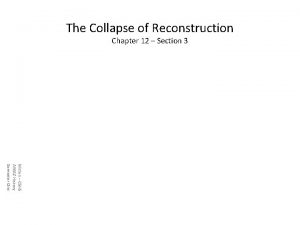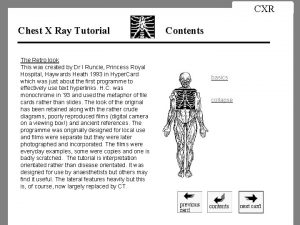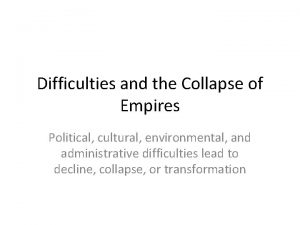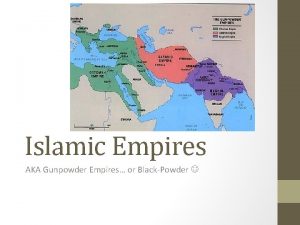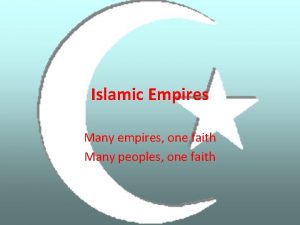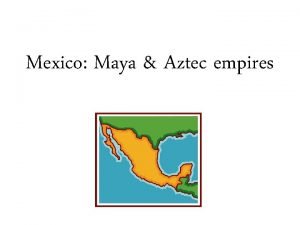Unit 5 Lesson 6 Why do empires collapse





























- Slides: 29

Unit 5, Lesson 6: Why do empires collapse? A comparative case study of the decline and fall of Era 3 empires 1

What goes up must come down! • Empires rise, but they also fall. • This unit will look at empires at their strongest, and then explore why they fell apart. • Turn and Talk: – Thinking back to Unit 4, what factors helped empires develop? – Make a prediction: Why did these empires fall apart? 2

Era 3 Overview… 1000 B. C. E. to 500 C. E. Cities • Between 1000 BCE and 500 CE in Afroeurasia, cities grew and multiplied. • People from many cities traded with each other, sometimes across long distances. • About 100 CE, the world's two biggest cities were almost certainly Rome, with a population nearing one million, and Luoyang in China's Han empire. • Most cities at this time served many purposes. They were centers of government, religion, trade, manufacturing, education, and art. 3

Technology and Expansion • New technologies allowed rulers to extend their systems of central command farther away from their capitals. • All across Afroeurasia, armed cavalry (soldiers on horses) replaced chariots as a tool for military conquest and control. • Soldiers, as well as state messengers, could carry political orders and news across large expanses of land by horseback faster than any other way. 4

Other innovations helped empires grow as well, such as advanced road construction (the Persians and Romans), canal building (the Chinese), and the use of the camel as the main transport animal in arid (dry) lands. Turn and Talk: What other technologies helped empires grow and spread? 5

Trade • Long-distance exchanges of products and ideas increased, not just within states but between them as well. • Between about 300 BCE and 300 CE, merchants extended trade routes across Inner Eurasia on the Silk Roads. They also used ships to carry goods on the Mediterranean and Black Seas and the Indian Ocean. Turn and Talk: Which empires traded with each other? 6

Social Hierarchy • The majority of the world's population were farmers, herders, or foragers. They subsisted on their own production, and they lived short lives compared to today. • In big cities, and in empires with lots of wealth, the gap between the rich and the poor increased. • Cities also had groups of merchants, artisans, scholars, and other people with special skills who accumulated wealth, though not necessarily much political power. • At the bottom of the social scale were slaves. This era witnessed a huge expansion of slavery and an organized slave trade in many parts of the world. • In all the urbanized societies of this era, adult males dominated political and social life, as far as we know. 7

Geography… The Big Picture of the World Stop and Jot, then Turn and Talk: Why here? Why did these areas develop in this way? At about 100 CE , there was a nearly continuous chain of states, most of them gigantic, extending from the Atlantic to the Pacific, in Afroeurasia. (overview materials and map from World History for Us All; http: //worldhistoryforusall. sdsu. edu/eras/era 4. php) 8

Empire Review: 9

10

Occurred in many areas, including architecture, engineering, public health, law, and art. They were important in helping to spread and maintain the empire. Roman innovations Some were Roman inventions, but many were borrowed from others and adapted. They helped pave the human pathway towards the modern era. 11

12

Han Dynasty Advanced Technology Paper and Ceramics Military advances Developed Civil Service Guided by Confucian ideals Organized empire Expanded Trade Connected to Central Asia Opened up Silk Roads 13

14

Graphic Organizer Central rule and influence over larger area Advances in science, math, art, and other areas General period of peace and prosperity Golden age of the Gupta in India Although there were many advances, inequality still existed; not everyone had the same rights because of the caste system and gender inequality. 15

• With a partner, identify three important characteristics that these empires shared at their heights. 123 - 16

The Mayans developed an advanced civilization, but had separate city-states that were never controlled by any one authority. They did not develop advanced weapons and transportation. Romans and Han China developed empires with advanced transportation systems and weapons technologies. Their access to large mammals and iron ore made this possible. Stop and Jot: So why do you think the Mayans didn’t form a unified empire? 17

Why do empires fall? 18

Problems that were key Internal factors in the fall of empires Taxes External Type of Problem (E, P, S, C, or N) Corruption Warfare Drought and/or floods Social unrest / rebellion Disease Invasions from outside forces Which empires did this apply to? 19

On your own sheet of paper, summarize three causes and three effects of the Fall of Empires in Era 3. Fall of Empires • 1) • 2) • 3) Causes • Rome • Han • Gupta • 1) • 2) • 3) Effects 20

Common features of the falls…. Inequality and corruption leading to unrest The Huns Big Borders The Fall of Empires Epidemics 21

The Huns • Nomadic pastoralists (herders) from the steppe lands of Central Asia (from around what is now Mongolia). • The development of the stirrup allowed them to fight from horseback very effectively, even shooting arrows accurately from the saddle. • They began to move south and west in search of better pasture lands. In this process, they clashed with Rome, Han China, and the Gupta of India, entering all of these territories. • The Huns contributed to the fall of these empires. • Attila the Hun, was the ruler of the Huns from 434 until his death in 453. He was greatly feared by the Romans at the end of their empire. 22

Political corruption and inequality All of these empires were characterized by large gaps between the rich and the poor, and there was also a lot of corruption and greed on the part of the ruling class. This led to rebellions and unrest and weakened central control. 23

Extensive Borders All three empires had vast borderlands that needed protection and guarding. Their borders grew too large for them to effectively patrol and control. 24

Epidemics As trade increased and spread ideas and goods across this vast region, it also helped diseases spread. Large numbers of people in all of these empires died from these epidemics, likely weakening economic production and social stability. 25

How did these factors affect each empire? • Han – The lack of a central government led to a long period of problems, but later empires emerged and took advantage of the intact culture and beliefs and the history of Chinese bureaucracy and dynastic rule. • Rome – Governmental systems in the western part of the empire completely disappeared. Conflict and a lack of any central control over the former empire became the norm. • Gupta – Culture and social systems stayed intact, and local rulers continued to play a key role. 26

Consequences of the Loss of Central Control • Trade was interrupted at times, but never completely stopped. The different areas were more fragmented, but people continued to exchange goods over large areas. • As political systems lost power, religion gained power. Christianity became very important in the former Roman Empire. • The lack of central control in these areas led to a time of increased local and regional conflict. • Cultural and technological advances didn’t completely stop, but they did slow down. Some knowledge was even “lost, ” or at least less commonly used and applied, than before. 27

Exit Pass What advice would you give to an emperor in one of these empires as they began to lose control? 28

Property of Oakland Schools Authors: Stacie Woodward and Darin Stockdill Editor: Amy Bloom Academic Review: Ian Moyer 29
 How are maritime and land based empires similar
How are maritime and land based empires similar Pictures
Pictures Napoleons goals
Napoleons goals Dont ask why why why
Dont ask why why why Hyp opp adj
Hyp opp adj Unit 10, unit 10 review tests, unit 10 general test
Unit 10, unit 10 review tests, unit 10 general test Hyatt regency hotel walkway collapse
Hyatt regency hotel walkway collapse Walkway collapse in kansas city
Walkway collapse in kansas city Chapter 12 section 3 the collapse of reconstruction
Chapter 12 section 3 the collapse of reconstruction Hydrophobic collapse in protein folding
Hydrophobic collapse in protein folding Principles of information security 5th edition pdf
Principles of information security 5th edition pdf Hyatt regency walkway collapse lessons learned
Hyatt regency walkway collapse lessons learned Hyatt regency crown center
Hyatt regency crown center Chapter 19 section 3 the collapse of the soviet union
Chapter 19 section 3 the collapse of the soviet union Ramsgate walkway collapse
Ramsgate walkway collapse Chapter 19 section 3 the collapse of the soviet union
Chapter 19 section 3 the collapse of the soviet union Sefer baday
Sefer baday Chapter 29 the collapse of the old order
Chapter 29 the collapse of the old order Omp for collapse
Omp for collapse What is limit state design
What is limit state design Hyatt regency walkway collapse summary
Hyatt regency walkway collapse summary San francisco bridge collapse earthquake
San francisco bridge collapse earthquake Cartoon gap
Cartoon gap Characteristic of medieval theater
Characteristic of medieval theater Right middle lobe collapse
Right middle lobe collapse Bridge collapse due to resonance
Bridge collapse due to resonance Three gorges dam collapse simulation
Three gorges dam collapse simulation Structural redundancy
Structural redundancy Bronze age collapse
Bronze age collapse Bridge collapse due to resonance
Bridge collapse due to resonance








